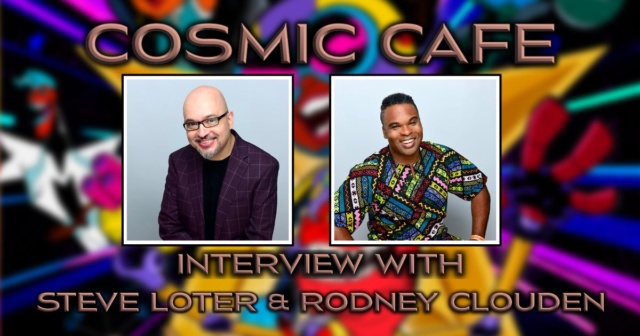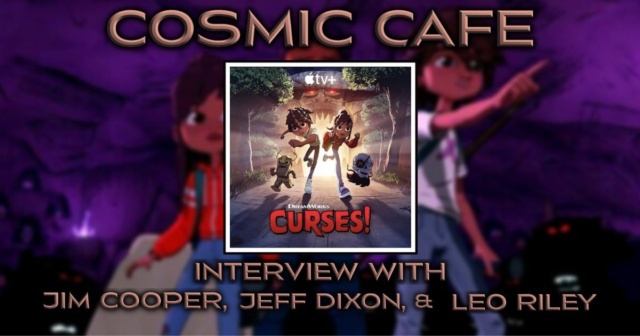Interview: Composer Stefan L. Smith on the Sound of Superhero Adventures
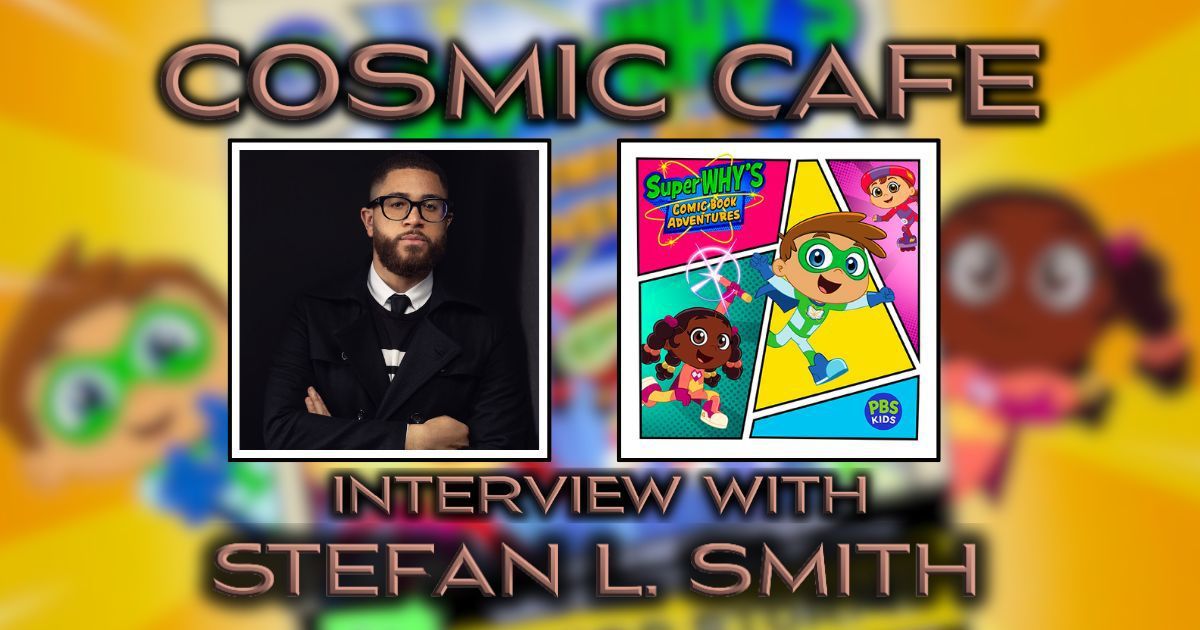
Stefan L. Smith is a talented composer who lent his talents to the animated Batman film Batman: The Doom that Came to Gotham last year. He’s back with another set of superhero compositions, this time for PBS. Smith scored Super Why’s Comic Book Adventures, a show geared towards helping young children improve their reading skills, with a superhero twist. The music is catchy and has a great purpose, so we were excited to chat over Zoom with him about bringing this project to life.
The interview with composer Stefan L. Smith
[Note: This interview has been lightly edited for clarity. You can listen to the full interview below, find it most places podcasts are available, or read on.]
Ayla Ruby: Okay. So, I guess, I’ll just jump into this. So, let’s talk about Super Why! so, we are very familiar with this in my house because I have a young daughter, so this is perfect.
Stefan L. Smith: Oh, awesome.
Ayla Ruby: How did you get onto this project? Can you talk about that?
Stefan L. Smith: It’s actually pretty funny. So, there was a lady that I knew through a connection that paired me up with 9 Stories. She was friends with one of the producers there, and they actually sent the prompt over. I’m more of a fan of action movies and things like that.
And so, that’s what I like to score. And so, she’s like, “It’s a children’s series for PBS kids.” And I was like, “Oh, I don’t know if I can do Barney and Friends,” but it looked like a cool project. And once I talked to them and just their musical approach of what they wanted to do, like 70s cop show funk mixed in with all different types of elements and musical styles. So, I was like, “One, this will be a great way for me to hone my craft for songwriting, but also with all different types of styles.” So, I submitted a demo where I sang, and I worked with my friend on it as well.
Stefan L. Smith: And I just sent it off and I was like, “You know what? Let’s see what happens.” And then my agent got a call back saying that they want to hire me to write for the show, and I was really excited about it. So, initially I was skeptical just because I had never done children’s music before, but I ended up loving it. It was a lot of fun.
Ayla Ruby: And it’s so different too because the PBS things especially with Super Why!, it’s very literacy geared. I’ve read about Sesame Street. And Sesame Street has really specific things that they try to include in how they present the material. Was there anything similar like that for Super Why!? Because, you’re teaching kids to read and helping kids to read.
Stefan L. Smith: Yes, it’s very curriculum based. So, the songs that were written out, we had to basically go through the script. It was written in the script. And I had to take lyrics from that and then create the songs, and even tweak those things as well. And there was a lot of back and forth between PBS Kids, 9 Story Media and Brown Bag to decide like, “Does this work? Is the tempo too fast for the words?” Because, the kids have to understand this. So, there was a constant feedback loop that we had to go through in order to get things just right. So yes, it’s very involved when it comes to that part, because you want to make sure kids are retaining the information, that it’s hooky and groovy, that they can dance to it, but also learn from it. So yeah, it’s completely different from anything else I’ve done.
Ayla Ruby: So, the songs, what I really like about Super Why! and all the PBS stuff in general. It’s like an earworm for kids and parents. It just gets stuck in your head. And I think that’s so amazing for just helping them learn.
Stefan L. Smith: Good for the kids, bad for the parents.
Ayla Ruby: That’s true. But, it works out. I can hear the song in my head over and over, but that’s good.
Stefan L. Smith: Yeah.
Ayla Ruby: Okay. So, how do you create an earworm? That’s a hard question maybe, but what goes into that? Because, it doesn’t just happen.
Stefan L. Smith: Yeah, I think creating earworms, you have to have a really catchy, rhythmic element, something that really gets your body moving. And, I think, the use of syncopation in general tricks the ear enough to want to know what’s coming next. So, when you don’t have something that’s just 1, 2, 3, 4, but it’s one, two, —-, immediately your ear is like, “Oh, what’s going on over here?” So, I think, it’s using a combination of rhythm, but also somewhat simple motives or a simple melody on top of something interesting rhythmically. And obviously harmony plays into it as well because that kind of shapes the feeling of the song. So, I think, making something simple but catchy is the key, which is the hardest thing to do because people do this every day and it’s so hard not to copy someone else. So, trying to create something that’s simple, hooky, and an earworm, especially for children, is a challenge.
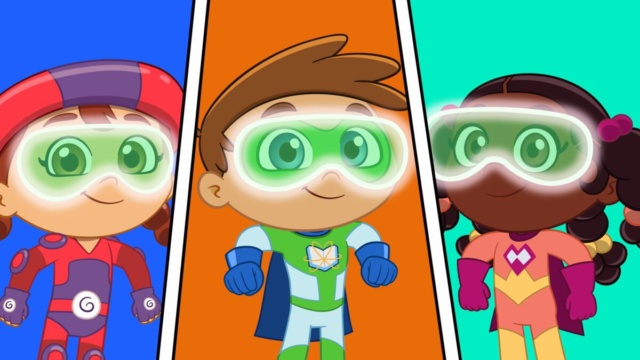
On the 70s influence for the music of Super Why! Comic Book Adventures
Ayla Ruby: So, you mentioned earlier that there was a 70s cop show vibe for this. Can you talk more about that? Can you talk about influences for this and any of that?
Stefan L. Smith: Yeah, sure. I think we were very influenced by Schoolhouse Rock, that type of vibe. And so, the director Geri [Bertolo], I love him. He’s like the Canadian Jack Black. So, it was this collaboration of like, “Let’s try this. And maybe we should try this here. And let’s do a little jazzy hit here.” So, it just became this laboratory of finding the sound. And Geri really steered true to that because he has huge ties to anime. So, there was elements of that in some of the transition scenes when they use their powers. Very anime-driven art style in general. And so, I hope that answered your question.
On collaborating with creatives who don’t speak music
Ayla Ruby: No, it totally did. No, that’s awesome. Okay. So, you mentioned the director. And I don’t know if this is true for him, but how do you collaborate when the person doesn’t necessarily speak music? Because, it’s this very specific world that if you’re a creative director, maybe you know that you’re creative in other ways.
Stefan L. Smith: Yeah. When I was younger, I used to be so bad with this particular situation because I come from a very dominant classical music background. So, when I’m speaking music, it’s like a second language to me, and I sometimes assume people know it. So, I think, the thing that I learned the most is speaking in adjectives. People always understand that a little more than being like, “Maybe we should try this instrument or this instrument;” because then you run into cases where they’re like, “Let’s try the tuba there,” but they really meant a cello or something. So, it’s like they may not know the… That’s absurd. But, they may not know the full knowledge of the orchestra and the palette. So, it’s better to speak in adjectives, to be able to decide, “What’s the mood, how do we want to feel?” And then from there I can figure out a collection of instruments or orchestration to hone in on that feeling, and then we tweak it as we go.
Ayla Ruby: Now, so for this, what was recording this like? Were there sample tracks? I think I’ve read that or heard that with Batman, or was it in the studio recording?
Stefan L. Smith: Yeah. So, a part of it was recorded in the studio, and then the majority of the music production was done by myself at my computer.
Ayla Ruby: Oh, boy.
Stefan L. Smith: I think the entire score and the show was all sample orchestration. But, I do a lot of programming, and I think my experience being a session musician on the stages, I’m just around that sound a lot. So, it’s easy for me to be able to tweak virtual instruments to make them sound even more realistic. Not that I want to, but sometimes you have to meet the goal. Of course, you want to hire this big group and stuff, but money comes into play.
And so, the vocals were all recorded in Canada. And the actors actually recorded them, so they weren’t like trained singers. And that was a stylistic choice too. We wanted to make sure that it felt like kids were singing. And so, there are a little pitch issues here or there, but that’s the characteristic of kids when they’re singing.
Ayla Ruby: Yeah.
Stefan L. Smith: But yeah, we recorded all the vocals ahead of time, and then we did sampled references of the songs. And from there those were sent to the animators. And then they lock that to the picture. And then from there sent the final edits of each episode. And then I scored each episode, as well as writing the songs for each episode. So, it was a very lengthy process. It ended up being awesome.
On how long it takes to score an episode
Ayla Ruby: Okay. So, let’s talk about for an individual episode and maybe the whole thing in general, so from idea to actually having an episode complete. Because, there’s no magic wand, and it’s a lot of work. How long does that take? What is the process like?
Stefan L. Smith: The first part with these companies, the first part of the process was, like I said, developing the songs, tweaking everything, recording that, and then getting that locked. And that was probably done over the course of… Oh man, I don’t even remember, maybe a few months or so. But, it was turning around five episode batches every two weeks or something, or maybe a week, or… I can’t remember what… It was fast. You had to write a lot of music in a short amount of time. So, that’s going from the lyrics, tweaking the lyrics to make sure they work musically, and then writing the melodies, and then from there, writing the music surrounding the melodies, and then recording vocals, et cetera. It’s not a lot of time to be able to do that. And I don’t have this team of 25 ghostwriters working with me. It’s a small team, but very robust small team. So, we were able to handle those turnarounds well.
On bringing something to life within a set of parameters
Ayla Ruby: Was there anything really challenging or really satisfying that you were able to bring to life with this?
Stefan L. Smith: I think the challenging aspect is working within parameters. I know in scoring, we have to work within parameters of syncing, duration, hit points, things like that. But, when you have those already attached and then other things on top, you got to make sure that every word is heard and enunciated; and you have to make sure that it’s catchy and simple, and that the rhythm isn’t too complex for the children to sing. These are things that you don’t really run into unless you’re working on a production like this. So, I think, those challenges were the rewarding aspects of figuring out how to make things work with such strict guidelines.
Ayla Ruby: Got you.
Stefan L. Smith: I think that’s going to help me further on in my process of scoring.
On the differences between scoring for animation and live-action
Ayla Ruby: Oh, absolutely. So, you’ve done a lot of animation work, but you’ve also done some live action stuff earlier, I guess, in your career. Can you talk about the differences between scoring for animation versus scoring for live-action?
Stefan L. Smith: I think animation relies heavily on the music, much more so than live-action because there’s so much more you can do and take risks with animation, especially in action sequences and things like that. And there’s also this stylistic consideration of what we call “Mickey Mousing,” where you’re hitting every action on the screen and doing things like this. When you do that in live-action, sometimes it can just be overkill.
Ayla Ruby: Oh, yeah.
Stefan L. Smith: But, in animation, it really works. So, I feel like there are different things you have to take into account, letting the live-action actors drive the scene more than taking over with music. Sometimes animation, that’s its job to really blanket it and elevate it even more. Not to say that’s not the job in live-action, but usually people… I don’t know. I feel like people are more drawn to the human characteristic of a person in front of me on screen talking, versus an animated character.
Ayla Ruby: Yeah.
Stefan L. Smith: That’s not to poo poo on animation, but it is just how people connect normally. So, we need more elements to bring people in and an animation that includes more sound design, and effects, and music, et cetera.
Ayla Ruby: Oh, I think that’s totally true. You need more to be immersive.
Stefan L. Smith: Yeah.
On working with a big IP like Batman versus Super Why!
Ayla Ruby: So, obviously, you mentioned parameters with PBS, you had a bunch of things that you had to hit on with this. How is it different working on something like that versus working on Batman, where you have this huge IP history and musical expectations with certain Batman notes?
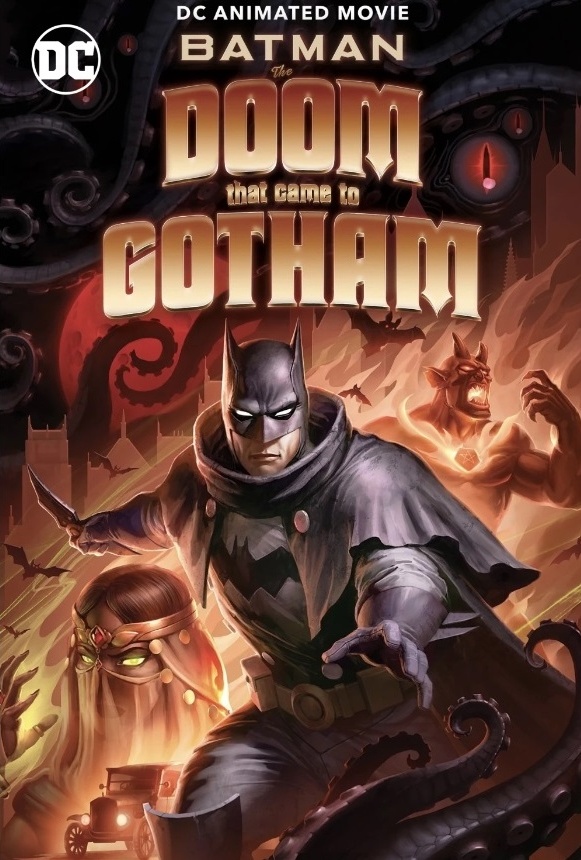
Stefan L. Smith: It’s all good. Batman is an intimidating IP, it’s been around for a long time. There’s a huge fan base, both like cult and mainstream. And so, people definitely have expectations when they see a Batman film. This, Batman: The Doom That Came to Gotham, very different animated film. And most fans will definitely agree with that because it’s this dark suspense, it’s horror, fantasy film, and a lot of people… and Lovecraftian, which you don’t really see a lot.
Stefan L. Smith: So, my goal was to try to create something familiar with the harmonic language, that big orchestration, dark sound, really low lows, and high highs, and soaring horns, and all that, but trying to make it also its own fingerprint; because it is its own film. So, I tried to steer clear of our traditional Batman themes because I wanted something different. So, that was the biggest thing and the challenge. I feel like I was constantly in my head about it, in the beginning of it, because I’m like, “Oh, that score is amazing, and James Newton Howard, and Danny Elfman, and Shirley Walker,” and all these people that created these sound worlds that still live on and on.
Stefan L. Smith: And I’m like, “How do I compete to that?” And so, instead of just seeing it as a competition thing, I just put together a playlist of all their scores and just immersed myself into it; so by the time it was time to write, it was like I had that backbone of Batman’s sound; and then I was able to expound from that or expand from that. So yeah, it was very, very challenging. And not to mention the timeline and the delivery schedule, we didn’t have time to record the orchestra just in this performance schedule. So, besides writing an hour and 27 minutes of music, I had to program an hour and 27 minutes of music on top of that and mix and master.
Ayla Ruby: It turned out great.
Stefan L. Smith: Thank you. But, most people I talk to, they’re like, “Wow, where did you record the score?” I’m like, “My studio, my computer.” And they’re like, “What?” It took a long time to get all of that right. And from my background, the last thing I wanted to do was put something out that sounded like a Nintendo.
Ayla Ruby: Yep.
Stefan L. Smith: So, yeah. So, I think, rising to the expectations of the fan base is the hardest challenge when it comes to a big IP. But, you also have to accept that not everyone’s going to love it. And you have to accept that people will love it too. So, I’m just happy to be a part of it. For me, fairly new to the studio scene as a composer, it was an excellent way for me to be able to somewhat flex my muscles in a realm that a lot of people don’t get the opportunity to write for. So, I’m just blessed to be able to be part of the franchise.
Stefan L. Smith on what’s next for him after Super Why! Comic Book Adventures
Ayla Ruby: Oh, that’s wonderful. I know we’re getting pretty close on time. Can you talk about what you’re working on now? Are you allowed to share that? Or is that-
Stefan L. Smith: I can share a few things. I do a lot of concert music as well for chamber ensembles and also orchestras. So, I guess, the past two years, there was a commission I did for the Colburn School of Music called “My Young Friend.” It was written for Andrew Brady, who’s the principal bassoonist of Saint Paul Chamber Orchestra now. He was the principal of Atlanta Symphony. But, I wrote that piece for bassoon and piano, which later after him winning the job at Saint Paul, he had introduced them to the piece. And so, in March I’ll be flying up there for the premiere of Saint Paul Chamber Orchestra and Andrew soloing on “My Young Friend.” So, I’m really excited about that, because Saint Paul is one of the top chamber orchestras in the world, and just to be asked to write something for them is incredible. And then also a piece that I wrote called “Quintet in the Key of Blue,” that was commissioned by the Dubhe Ensemble and their artistic director is, Joseph Conyers, who’s the principal base of the Philadelphia Orchestra.
Ayla Ruby: I’m from Philly, so that makes me happy.
Stefan L. Smith: Oh, cool. Awesome. You know how amazing that orchestra is-
Ayla Ruby: Yes.
Stefan L. Smith: The string sound. But yeah, he hit me up and was like, “Hey, we want you to write a piece for our ensemble.” So, they premiered that last year, but also are going to go on tour this year at the Harris Theater in Chicago, and other places around performing that piece. There’s something else that’s really exciting that I cannot talk about yet because it hasn’t been announced. But, if you want to know, anyone who wants to know, just check out my socials because when I post that, it’s going to be pretty awesome. And there’s a few other projects that are in the works, that negotiation phase, so I’ll keep everyone posted.
Ayla Ruby: Oh, that’s exciting. And I’ll keep check… What are your socials so we can-
Stefan L. Smith: Sure. Most of them, IG, Twitter, and I think, what’s the other one, YouTube. [see his official website FMI and social media links]
Ayla Ruby: Yeah.
Stefan L. Smith: All of those is “@Violanation,” V-I-O-L-A-N-A-T-I-O-N. So dorky. I’m a violist, but I got to represent. But, yeah, if you type in “Violanation” in Google-
Ayla Ruby: You’ll find it.
Stefan L. Smith: Yeah, you’ll find everything.
Ayla Ruby: That’s awesome.
Stefan L. Smith: And Spotify. Spotify, my name is Stefan L. Smith on there, and all the other streaming platforms. So, if you want to hear my music, check that out as well.
Ayla Ruby: Perfect. Thank you so much. And thanks for taking the time to talk.
Stefan L. Smith: Yeah, no problem. Thank you.
Where to learn more about Stefan L. Smith and his work on Super Why’s Comic Book Adventures
You can catch Super Why’s Comic Book Adventures on PBS. If you’d like to learn more about Smith’s other work and find out where to follow him on social media check out his official site at StefanLSmith.com.
Check out more of our interviews below, and find more episodes of the Cosmic Cafe podcast here, and most places podcasts are available.
Interview: Moon Girl and Devil Dinosaur EPs Steve Loter and Rodney Clouden Talk Season 2
Interview: CURSES! with Jim Cooper, Jeff Dixon & Leo Riley

